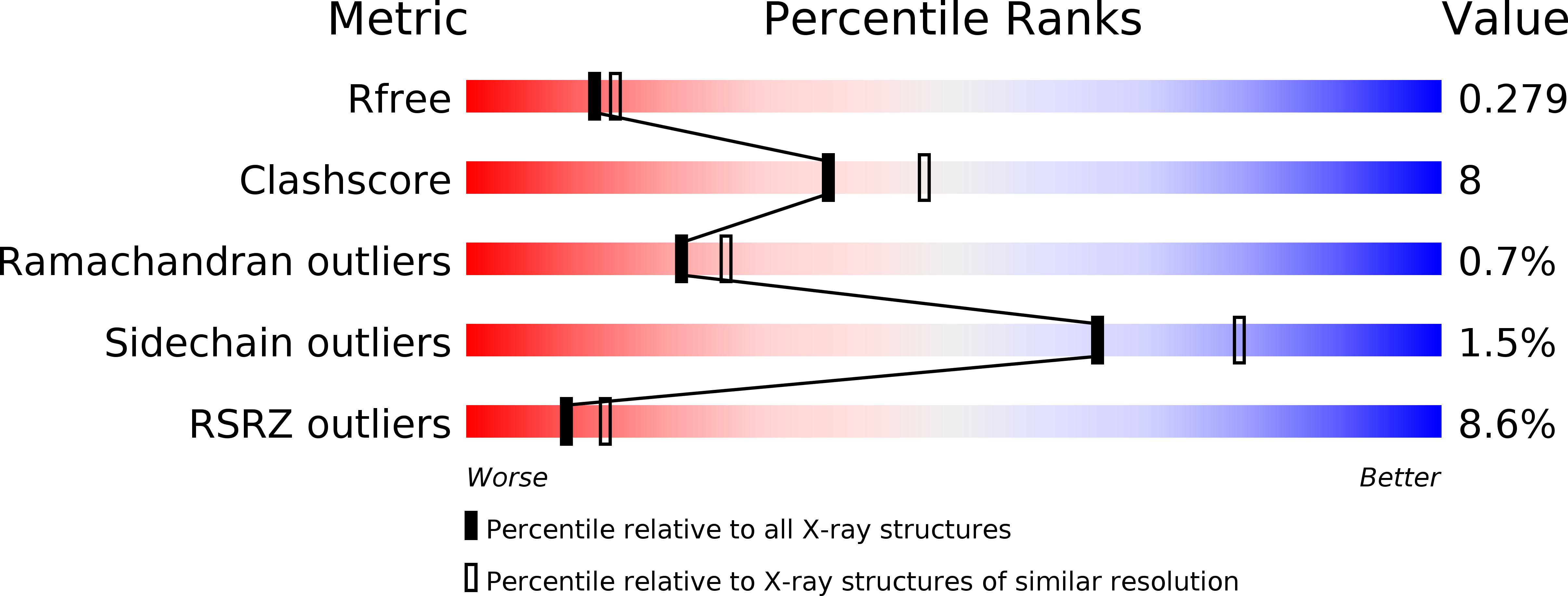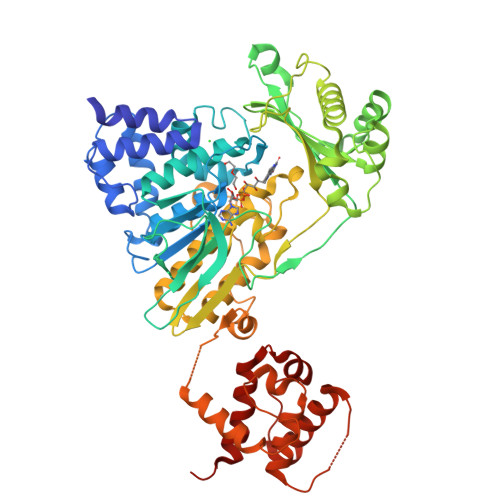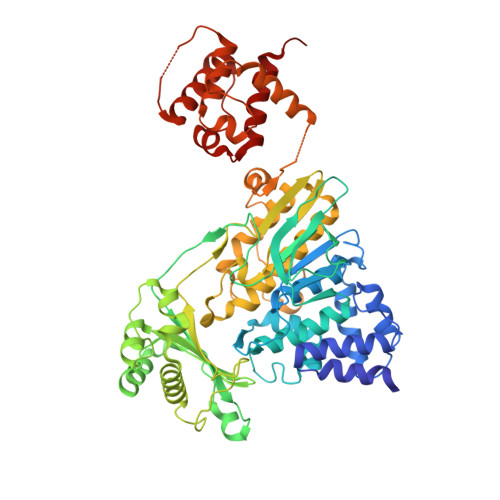Modulation of MICAL Monooxygenase Activity by its Calponin Homology Domain: Structural and Mechanistic Insights.
Alqassim, S.S., Urquiza, M., Borgnia, E., Nagib, M., Amzel, L.M., Bianchet, M.A.(2016) Sci Rep 6: 22176-22176
- PubMed: 26935886
- DOI: https://doi.org/10.1038/srep22176
- Primary Citation of Related Structures:
4TXI - PubMed Abstract:
MICALs (Molecule Interacting with CasL) are conserved multidomain enzymes essential for cytoskeletal reorganization in nerve development, endocytosis, and apoptosis. In these enzymes, a type-2 calponin homology (CH) domain always follows an N-terminal monooxygenase (MO) domain. Although the CH domain is required for MICAL-1 cellular localization and actin-associated function, its contribution to the modulation of MICAL activity towards actin remains unclear. Here, we present the structure of a fragment of MICAL-1 containing the MO and the CH domains-determined by X-ray crystallography and small angle scattering-as well as kinetics experiments designed to probe the contribution of the CH domain to the actin-modification activity. Our results suggest that the CH domain, which is loosely connected to the MO domain by a flexible linker and is far away from the catalytic site, couples F-actin to the enhancement of redox activity of MICALMO-CH by a cooperative mechanism involving a trans interaction between adjacently bound molecules. Binding cooperativity is also observed in other proteins regulating actin assembly/disassembly dynamics, such as ADF/Cofilins.
Organizational Affiliation:
Structural Enzymology and Thermodynamics Group, Department of Biophysics &Biophysical Chemistry, Johns Hopkins University School of Medicine, 725 North Wolfe St., Baltimore, MD 21205, USA.





















